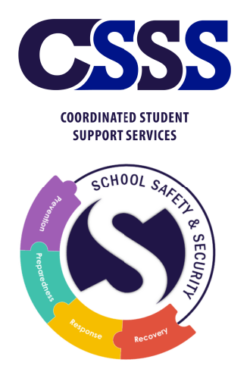Bullying Prevention and Intervention Strategies
 School-Wide Prevention and Intervention
School-Wide Prevention and Intervention
The most effective anti-bullying plan is designed and implemented with specific knowledge and skills consistently trained and used throughout the school district. This plan declares a school’s commitment to creating a safe, caring, and respectful learning environment for all students. A bullying prevention and intervention plan adopted by the district might include specific behavior programs, forms used, philosophies of interactions, curriculum, or basic protocols. Effective anti-bullying programs or curricula implement a scope and sequence of knowledge and skills to be learned by all students and requires school-wide involvement and support. Students involved in bullying situations benefit from additional instruction specific to their role as one using bullying behaviors, as a target, or as a bystander/witness.
Prevention Strategies
Prevention is best addressed by communicating and teaching the expected pro-social behaviors.
- Communicate policy and protocols for bullying behaviors to all staff, students, and parents.
- Empower bystanders to promote and take responsibility for creating a safe and welcoming environment.
- Provide a means for safely reporting bullying behaviors
- Adopt a social skills and social-emotional learning curriculum
- Monitor and adjust local bullying prevention programs based on analysis of local school data and best practices in bullying prevention (change in supervision, use of resources, methods of communication, reporting procedures, etc.)
- Improve school environment; students need to feel safe and supported by their school.
- Work to foster positive student-teacher relationships.
The following paper contains a list of practical ways to improve the school environment:
Voight, A. & Nation, M. (2016) Practices for improving secondary school climate: a systematic review of the research literature. Am J Community Psychology, 58, 174-191, doi: 101002/AJCP.12074
Bystander/Witness Interventions
The most impactful intervention is activating and empowering the bystanders/witnesses through education about bullying and practice (role plays) in intervening. Group training for bystanders includes emphasizing that there is strength in numbers and that permission is given with the expectation to intervene respectfully and safely or report the bullying behaviors. Determining specific bystander interventions depends on analyzing the level of risk of a particular bullying situation.
Target Interventions
Targets must be supported by a third party and have their reports taken seriously. Target interventions typically include teaching social skills such as friendship, assertiveness, and anger management. Interventions for targets may be done one-on-one or in a support group. Targets should not be re-victimized by bringing the target and perpetrator together to resolve the situation.
Behavior Intervention Strategies
School discipline policies, while needed to address student conduct issues and support positive student behaviors, are not sufficient to address bullying behaviors. Bullying behavior interventions may include teaching social skills such as friendship, empathy, and anger management in one-on-one settings, not in a group setting. Discipline should be addressed in private. Interventions focus on identifying the expected behaviors.
Below are resources where schools can find evidence-based programs and interventions. These resources also provide further information on bullying and tips on preventing it.
RTI action network – OER Commons
Kinder and Braver World Project: Bullying Prevention 101 for Schools: Dos and dont’s
Research Resources | StopBullying.gov – Research Summaries






